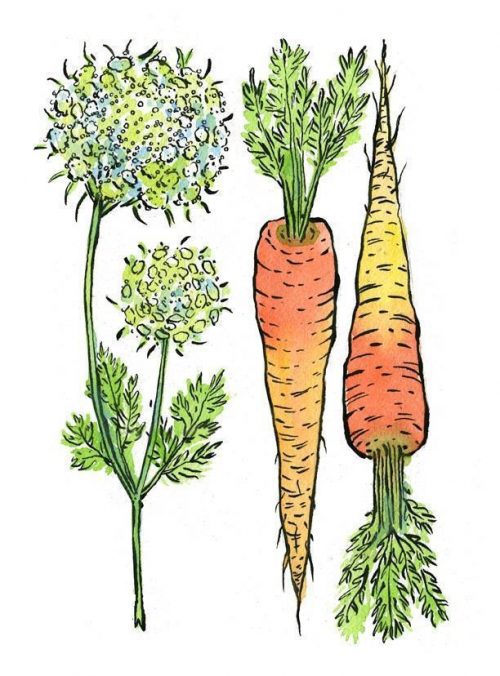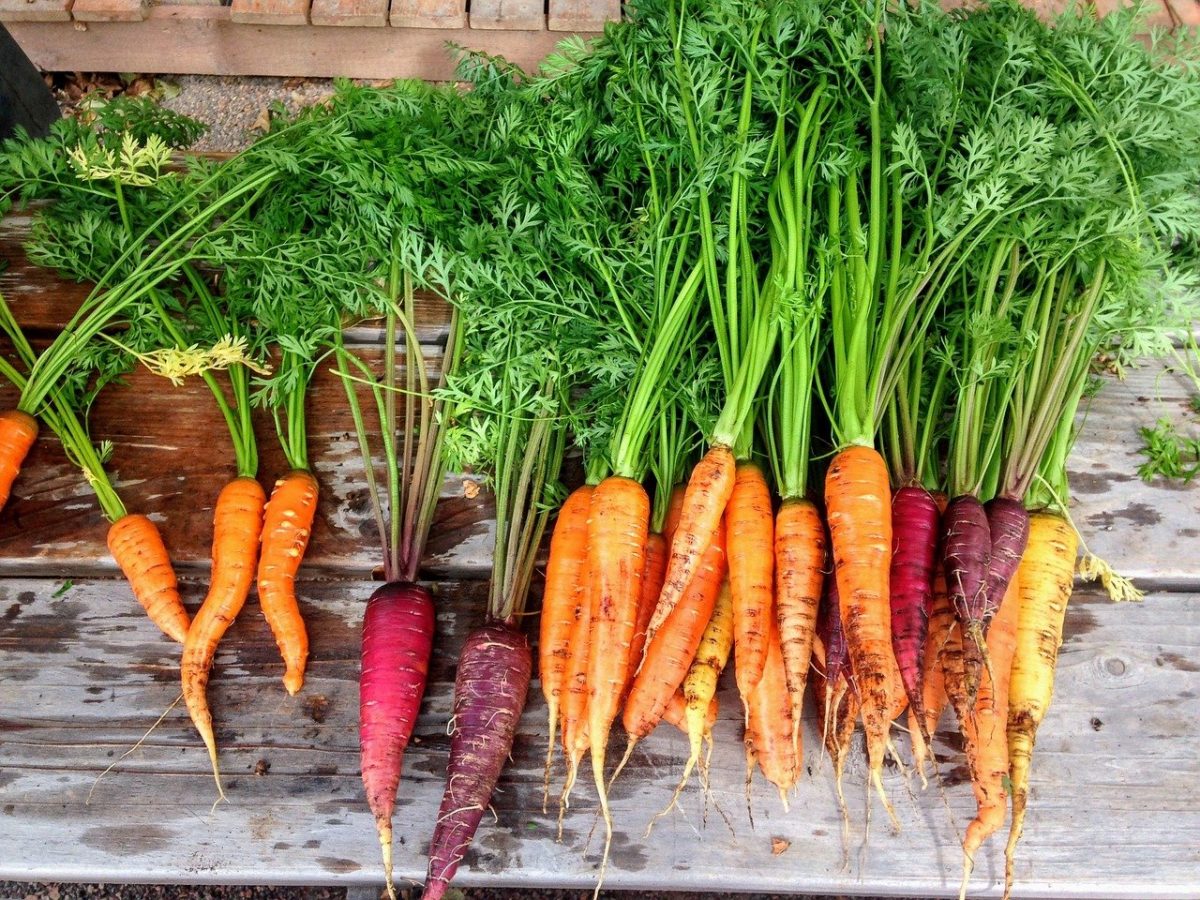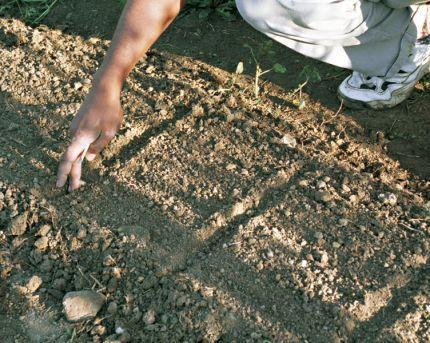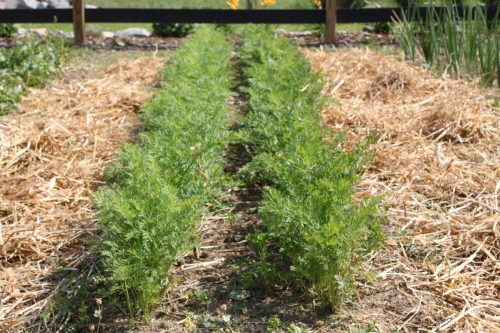Carrot, information about crop management
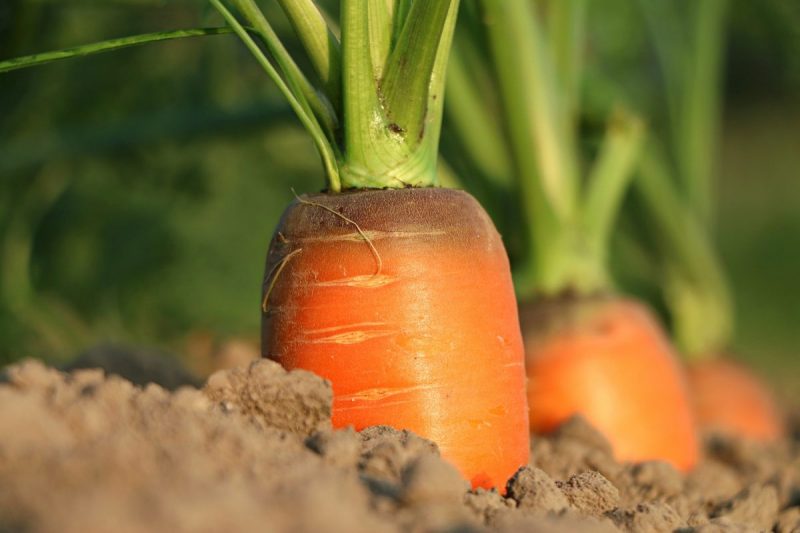
Carrot (Daucus carota) is grown for its nutrient and vitamin-rich roots. It is a biennial plant, forming a taproot and a rosette of leaves in the first year, then forming the stem, flowers, and fruit in the second. The carrot root is eaten fresh, in salads, or in various dishes. Carrots are high in carbohydrates, lipids, proteins, vitamins (A, C, B), mineral salts, iron, phosphorus, and other nutrients. In addition, carrots are used in the pharmaceutical, cosmetic, and chemical sectors.
Carrots are native to the Mediterranean and the Black Sea basins but grow spontaneously in China, India, etc. It was first used in Greece. Large countries growing carrots are China, the USA, Poland, Holland, France, Germany.
Botanical particularities
The carrot root system penetrates the soil up to 60 cm. Root thickening begins about 60 days after germination. The orange color is due to the carotene content. Carrot leaves are pinnate, with a long petiole, and covered with bristles. The flowering stem is branched, fistulous and pubescent. Its flowers are arranged in compound umbrella-like inflorescences and pollination is entomophilous. Carrot fruit is indehiscent and the seed is rich in volatile substances.
Climate and soil requirements
The optimum temperature for seed germination is 20-22 degrees Celsius. Under these conditions, plants sprout in 10-15 days. Carrots can also tolerate lower temperatures (3-4 degrees Celsius), but these can affect sprouting, which can take up to 20-25 days. For plant growth and normal root development, the optimum temperature is 18-20 degrees Celsius.
It has high water requirements and is sensitive to drought during emergence. Also, during the root thickening period, optimal soil moisture of 75% must be ensured. Alternating drought and excess moisture cause root cracking. Prolonged dry periods and high temperatures cause root lignification. Carrots do not have high light requirements, but shade should be avoided during root development. It prefers light-textured soils with a neutral pH and rich in nutrients.
Cultivation
Crop rotation
Carrots can be grown after vegetable plants that are harvested early, leaving the land clean of weeds. These are tomatoes, peppers, cucumbers, aubergines, zucchini. They are not grown after celery, parsnips, onions, or garlic, nor after cereals.
Soil preparation
It is carried out in autumn: after the previous crop is removed, basic fertilization is applied, following chemical analysis of the soil. After fertilization, the soil is mobilized to a depth of 25-30 cm. In the early spring, the soil is fertilized again, after which it is tilled and leveled. Pre-emergence herbicides can be used to prevent weeds from appearing.
Recommended products
-
You can find products on a different store
Change Store -
You can find products on a different store
Change Store -
You can find products on a different store
Change Store -
You can find products on a different store
Change Store -
You can find products on a different store
Change Store -
You can find products on a different store
Change Store -
You can find products on a different store
Change Store -
You can find products on a different store
Change Store -
You can find products on a different store
Change Store -
You can find products on a different store
Change Store -
You can find products on a different store
Change Store -
You can find products on a different store
Change Store -
You can find products on a different store
Change Store -
You can find products on a different store
Change Store -
You can find products on a different store
Change Store -
You can find products on a different store
Change Store -
You can find products on a different store
Change Store -
You can find products on a different store
Change Store -
You can find products on a different store
Change Store -
You can find products on a different store
Change Store -
You can find products on a different store
Change Store -
You can find products on a different store
Change Store -
You can find products on a different store
Change Store -
You can find products on a different store
Change Store
Sowing
It is done early spring after the ground has been tilled. Ideally, the soil should have high furrows to avoid water stagnation. 3-4 rows can be planted per furrow, with a distance between plants of 4-5 cm per row. The sowing depth is 2.5-3 cm.
Pest and disease control
It is done by applying specific fungicide and insecticide treatments. To avoid the appearance of diseases or pests resistant to the action of plant protection products, it is recommended to alternate products with different active substances.
Weed control
Mechanical or manual hoeings are used to destroy weeds. Weeds can also be controlled chemically by applying approved herbicides.
Recommended products
-
You can find products on a different store
Change Store -
You can find products on a different store
Change Store -
You can find products on a different store
Change Store -
You can find products on a different store
Change Store -
You can find products on a different store
Change Store -
You can find products on a different store
Change Store -
You can find products on a different store
Change Store -
You can find products on a different store
Change Store -
You can find products on a different store
Change Store -
You can find products on a different store
Change Store -
You can find products on a different store
Change Store -
You can find products on a different store
Change Store -
You can find products on a different store
Change Store -
You can find products on a different store
Change Store -
You can find products on a different store
Change Store -
You can find products on a different store
Change Store -
You can find products on a different store
Change Store -
You can find products on a different store
Change Store -
You can find products on a different store
Change Store -
You can find products on a different store
Change Store -
You can find products on a different store
Change Store -
You can find products on a different store
Change Store -
You can find products on a different store
Change Store -
You can find products on a different store
Change Store
Care works
When the carrot roots are the thickness of a pencil, the thinning can be done. This is done in small areas. The distance between plants in a row should be 4-5 cm. Thinning is done after watering or after rain (when the soil is sufficiently moist), so as not to disturb the remaining plants in the crop.
Irrigation
Initially, are used volumes of 8–100 cubic meters/ha. Once the plant advances in vegetation, the watering norms increase. Another 4-5 waterings will be carried out, of 250-400 cubic meters/ha each. Soil moisture must be constant. To maintain the soil moisture, the soil can be mulched. The operation consists in covering the soil with vegetable residues or special foils. Mulching warms the soil, regulates soil moisture, prevents the development of weeds, thus reducing the number of crop maintenance works.
To stimulate the development of the roots, it is recommended fertilization in stages. The first fertilization is done after the plants have thinned out. The second fertilization is carried out when the roots have started to thicken. Carrots react well to foliar fertilizers.
Recommended products
-
You can find products on a different store
Change Store -
You can find products on a different store
Change Store -
You can find products on a different store
Change Store -
You can find products on a different store
Change Store -
You can find products on a different store
Change Store -
You can find products on a different store
Change Store -
You can find products on a different store
Change Store -
You can find products on a different store
Change Store -
You can find products on a different store
Change Store -
You can find products on a different store
Change Store -
You can find products on a different store
Change Store -
You can find products on a different store
Change Store -
You can find products on a different store
Change Store -
You can find products on a different store
Change Store -
You can find products on a different store
Change Store -
You can find products on a different store
Change Store -
You can find products on a different store
Change Store -
You can find products on a different store
Change Store -
You can find products on a different store
Change Store -
You can find products on a different store
Change Store -
You can find products on a different store
Change Store -
You can find products on a different store
Change Store -
You can find products on a different store
Change Store -
You can find products on a different store
Change Store
Harvesting
Harvesting can be done manually, mechanized or semi-mechanized. Delayed harvesting causes the quality of the roots to deteriorate. They harden, may crack easily, and reduce their resistance to storage. Rainy periods should be avoided for harvesting, as the roots may deteriorate. After removing the leaves, the roots are sorted and stored.














































































































































































































































































































































































































































